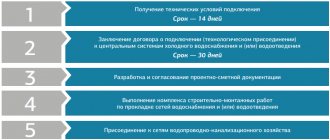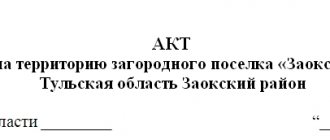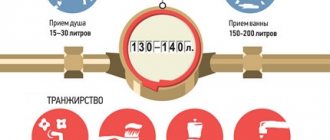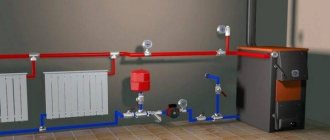The Supreme Court explained the calculation of water tariffs for residential premises owned by legal entities where their employees live
On June 9, the Judicial Collegium for Economic Disputes of the Supreme Court issued Ruling No. 304-ES20-16768 in case No. A81-1744/2019 concerning a dispute regarding the tariff used in calculating the cost of water supply and sanitation for citizens living in residential premises owned by a legal entity.
JSC Inter RAO – Electric Power Plants applied to JSC Urengoygorvodokanal to conclude a water supply and sanitation agreement for residential premises located in multi-apartment residential buildings owned by the company. At the stage of drawing up the contract, disagreements arose between the parties about the tariff at which the calculation was to be made: Inter RAO - Electric Power Plants insisted on using the tariff “for the population”, since employees lived in the premises and offered a higher tariff.
Since the parties were unable to find a compromise, Inter RAO – Electric Power Plants appealed to the Arbitration Court of the Yamalo-Nenets Autonomous Okrug. The court upheld the claim based on the fact that the disputed premises are residential and intended for company employees. He established that when calculating the cost of utility resources, the tariff established for the population should be used, but only if these premises are not used to carry out the commercial (professional) activities of the organization, and the supplied resources are used exclusively for utility needs.
However, the appellate and district courts overturned the decision of the first instance, arguing that legal entities that are owners of residential premises are not entitled to benefits. And, since citizens do not acquire the right to permanent (lifelong) use of residential premises, and a legal entity does not have the status of a lessor under residential lease agreements, the courts came to the conclusion that the “other consumers” tariff should be applied.
Next, the company Inter RAO – Electric Power Plants filed a cassation appeal with the Supreme Court, in which it asked to uphold the decision of the court of first instance. Having studied the case materials, the Judicial Collegium for Economic Disputes noted that, despite the fact that legal entities - owners of residential premises are not on the list of entities claiming benefits, the court can establish the purpose of these premises for the residence of citizens in order to satisfy their personal household needs. In other words, the purpose of residential premises for the residence of citizens does not change when it is owned by a legal entity.
“The establishment of such a circumstance also makes it possible to apply, when calculating the cost of communal resources supplied to such residential premises, the tariffs established for the “population” group, since a different approach would place the citizens living in them, using residential premises for living in order to satisfy personal household needs and implementation of the constitutional right to housing, in a discriminatory position in comparison with citizens living in their own residential premises or residential premises owned by public entities,” the Supreme Court emphasized.
The court also recalled the explanations of the Constitutional Court regarding the fact that the legislator, when establishing appropriate regulation, must act on the basis of the constitutional principle of equality, which is universal in nature and covers all areas of public relations, serving as a constitutional criterion for assessing legislative regulation. According to the Supreme Court, it is the observance of this principle, which guarantees protection from all forms of inequality in the exercise of rights and freedoms, that indicates the prohibition of introducing such differences in the rights of persons belonging to the same category (group) that do not have an objective and reasonable justification.
As the Court explained, the fact that the plaintiff used residential premises in commercial activities was not confirmed by the case materials, therefore, based on the principle of equality of participants in the relationship, it came to the conclusion that the court of first instance reasonably proceeded from the need to apply tariffs for the “population” group in the case under consideration. “The apartment buildings owned by the plaintiff are not inferior to rental houses in terms of their technical characteristics and improvement standards. Thus, the conclusions of the courts on the application of the “other consumers” tariff to the company were made in violation of the norms of substantive law,” the Supreme Court concluded, upholding the decision of the first instance.
Lawyer Andrei Konovalov called the determination of the RF Armed Forces correct and justified. According to the expert, it is worth paying attention to the fact that utilities are paid for by consumers themselves, living (albeit temporarily) in premises with residential status, at tariffs for the population; therefore, it is unacceptable to put them in an unequal position in terms of the amount of payment for utilities services compared to other consumers. “In this regard, the statement of the Judicial Collegium about the inadmissibility in such a situation of creating conditions under which the total volume of obligations of the owner of residential premises, who actually manages these houses and acquires a communal resource to provide them to the population, would exceed the total volume of obligations of end consumers” is also correct.” , noted the lawyer.
Andrei Konovalov also pointed out the relevance of this problem: in his opinion, the legal position set out in the considered ruling of the RF Armed Forces can be adopted by legal entities that own similar premises provided for residence to individuals.
Lawyer of Law Firm "YUG" Sergei Radchenko believes that the situation under consideration demonstrates how correctly the court should apply the principles of civil law, in this case - the principle of equality. In his opinion, the principles themselves do not contain rules of conduct; they are filled with specific content by the court when considering a specific case.
“The court, applying the principle of equality, considered it impossible to apply the norms of the regional law, which established different tariffs for citizens living in their own apartments and for citizens living in apartments owned by legal entities. Based on the principle of equality, citizens living in any apartments, regardless of their ownership, should be placed in equal conditions for their payment,” summed up Sergei Radchenko.
How is the charge for hot water supply calculated? What is DHW heating
Charging for hot water supply consists of two parts, or components, each of which is highlighted in a separate line on the receipt - DHW and DHW heating. This is due to the fact that water preparation in houses is carried out directly by the management company in individual heating points of each house. In the process of preparing hot water, two types of utility resources are used - cold water and thermal energy.
The first component, the so-called hot water supply, is directly the volume of water that passed through the hot water supply meter and was consumed in the room in a month. Or, if the readings were not taken, or the meter turned out to be faulty or its verification period has passed, the volume of water determined by calculation according to the average or standard for the quantity prescribed. The procedure for calculating the volume of DHW supply is exactly the same as for cold water supply. To calculate the cost of this service, the tariff for cold water is applied, since in this case it is cold water that is purchased from the supplier.
The second component, DHW heating, is the amount of thermal energy that was expended to heat the volume of cold water provided to the apartment to hot temperature. This amount is determined based on the readings of the common house heat energy meter.
In general, the fee for hot water supply is calculated using the following formula:
Pigv = Vigv × Txv + (Vvcr × Vigv / ∑ Vigv × Tvcr)
Where:
Vigv - the volume of hot water consumed during the billing period (month) in an apartment or non-residential premises
Tхв - tariff for cold water
Vvкр - the volume of thermal energy used during the billing period for heating cold water during the independent production of hot water by the management company
Vigv - the total volume of hot water consumed during the billing period in all rooms of the house
Tvкр - tariff for thermal energy
Calculation example: Let’s assume that hot water consumption in an apartment for a month is 7 m3. Hot water consumption throughout the house is 465 m3. The amount of thermal energy spent on heating hot water according to a common house meter is 33.5 Gcal 7 m3 * 33.3 rubles. + (33.5 Gcal * 7 m3 / 465 m3 * 1331.1 rub.) = 233.1 + 671.3 = 904.4 rub., Of which: 233.1 rub. – payment for actual water consumption (DHW heating line in the receipt) 671.3 – payment for thermal energy spent on heating water to the required temperature (DHW heating line in the receipt)
In this example, 0.072 gigacalories of thermal energy were spent to heat one cube of hot water.
The value showing how many gigacalories were required to heat 1 cubic meter of water in the billing period is called the DHW heating coefficient
The heating coefficient is not the same from month to month and largely depends on the following parameters:
1. Cold water supply temperature. At different times of the year, the cold water temperature ranges from +2 to +20 degrees. Accordingly, in order to heat water to the required temperature, different amounts of thermal energy will have to be expended. 2. The total volume of water consumed per month in all rooms of the house. This value is largely influenced by the number of apartments that submitted their testimony in the current month, recalculations, and, in general, the discipline of residents in submitting their testimony. 3. Thermal energy consumption for hot water circulation. Water circulation in the pipes occurs continuously, including during the hours of minimum water consumption. That is, for example, at night, hot water is practically not used by residents, but thermal energy for heating water is still spent to maintain the required temperature of hot water in heated towel rails and at the entrances to apartments. This figure is especially high in new, sparsely populated buildings and stabilizes as the number of residents increases.










